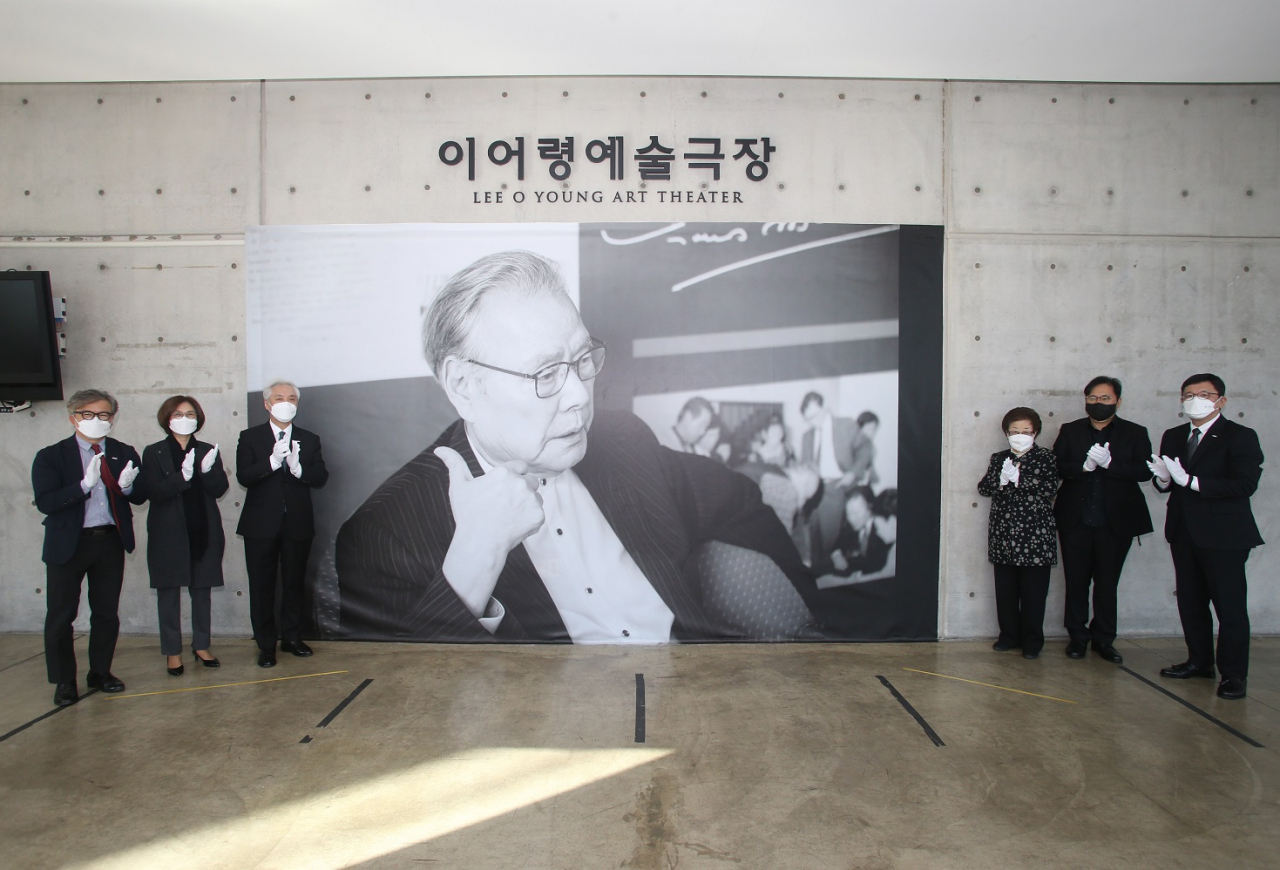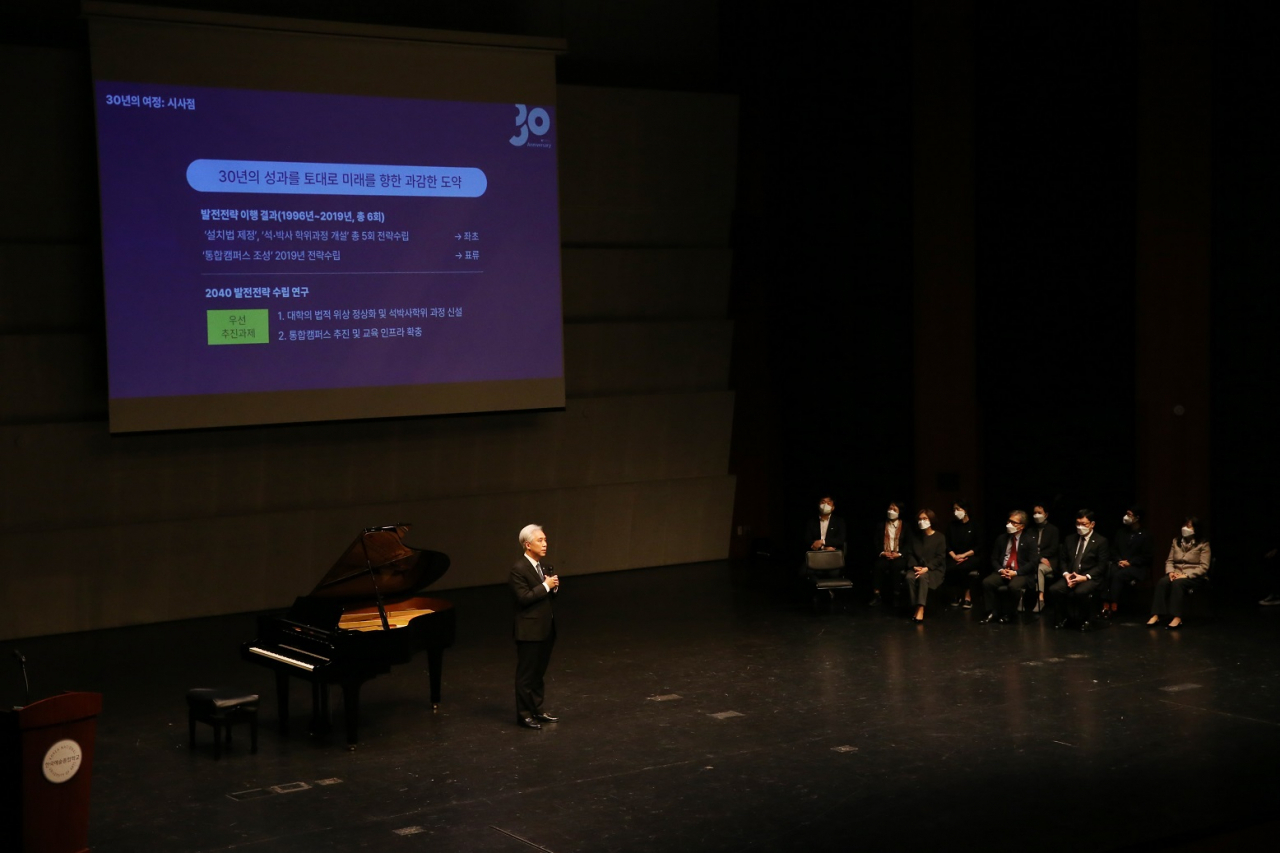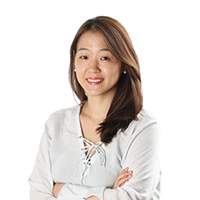K-Arts, celebrating 30 years, sets out bigger goals
By Park Ga-youngPublished : Oct. 25, 2022 - 18:10

Korea National University of Arts, known as K-Arts, which celebrates its 30th anniversary this week, aims to turn itself into a global institution attracting foreign students, its president, Kim Dae-jin, said Wednesday.
“Thirty years ago, K-Arts was established to provide top quality education so that Korean students would not have to go abroad to study -- a goal that not many believed back then,” Kim said. “For the next 30 years, we want to become an institution sought after by top art students around the world."
To achieve that goal, Kim, a pianist himself, stressed that the school should be allowed to award higher degrees -- master’s degrees and doctorate degrees. Not part of the “universities and colleges” category under the country’s Higher Education Act, K-Arts cannot issue a master’s degree even though it has offered graduate-level education for 28 years. Several lawmakers proposed related laws in the past two years, but the idea of expanding K-Arts' scope has been opposed by other arts universities.
The school boasts a long list of alumni who are now leading various fields spanning from traditional Korean arts to movies. Some of the school’s notable alumni are movie stars like Kim Go-eun and Lee Sun-gyun, classical musicians like Son Yeol-eom and Kim Sun-wook and ballet dancers like Park Sae-eun and Kim Ki-min.
Since the school's foundation, its students and alumni have received a total of 4,224 awards from domestic and international competitions, including 1,316 first prizes. In the past year alone, pianist Park Jae-hong won the 2021 Busoni International Piano Competition and Lim Yun-chan, a current student, took home the gold medal at the 17th Van Cliburn International Piano Competition. Cellist Choi Ha-young was awarded the first prize at the Queen Elisabeth Competition and pianist Kim Su-yeon won first prize at the Concours musical international de Montreal last year.

The president also called on the Ministry of Culture, Sports and Tourism to consider creating one integrated campus, bringing together the schools scattered in three locations around Seoul.
“In the era of the Fourth Industrial Revolution, convergence is key and essential to fostering creative talents. And this is impossible when departments are apart from each other,” Kim said.
K-Arts has 26 departments across six schools -- Schools of Music, Drama, Film TV & Multimedia, Dance, Visual Arts, and Korean Traditional Arts.
The school needs to find a new site for its main campus as it is located in one of the Royal Tombs of the Joseon Dynasty sites, which was designated a UNESCO World Heritage in 2009. The school was originally scheduled to vacate the premise by the end of 2017 but was given until the end of 2022 as the Culture Ministry could not find a new site. It is up to the Culture Ministry to find a new site for the school, but it is unclear when and to where the school would be relocated.
On Wednesday, the school celebrated the anniversary with the opening of Lee O-young Theater, named after South Korea’s first culture minister who passed away earlier this year.
Lee was behind the foundation of the school, helping to set up the related law during his tenure as the culture minister. Lee, a former reporter and professor who is considered a cultural icon, also laid the foundation for many of Korea’s key cultural policies.








![[Graphic News] More Koreans say they plan long-distance trips this year](http://res.heraldm.com/phpwas/restmb_idxmake.php?idx=644&simg=/content/image/2024/04/17/20240417050828_0.gif&u=)
![[KH Explains] Hyundai's full hybrid edge to pay off amid slow transition to pure EVs](http://res.heraldm.com/phpwas/restmb_idxmake.php?idx=644&simg=/content/image/2024/04/18/20240418050645_0.jpg&u=20240419100350)






![[From the Scene] Monks, Buddhists hail return of remains of Buddhas](http://res.heraldm.com/phpwas/restmb_idxmake.php?idx=652&simg=/content/image/2024/04/19/20240419050617_0.jpg&u=20240419175937)

![[KH Explains] Hyundai's full hybrid edge to pay off amid slow transition to pure EVs](http://res.heraldm.com/phpwas/restmb_idxmake.php?idx=652&simg=/content/image/2024/04/18/20240418050645_0.jpg&u=20240419100350)

![[Today’s K-pop] Illit drops debut single remix](http://res.heraldm.com/phpwas/restmb_idxmake.php?idx=642&simg=/content/image/2024/04/19/20240419050612_0.jpg&u=)